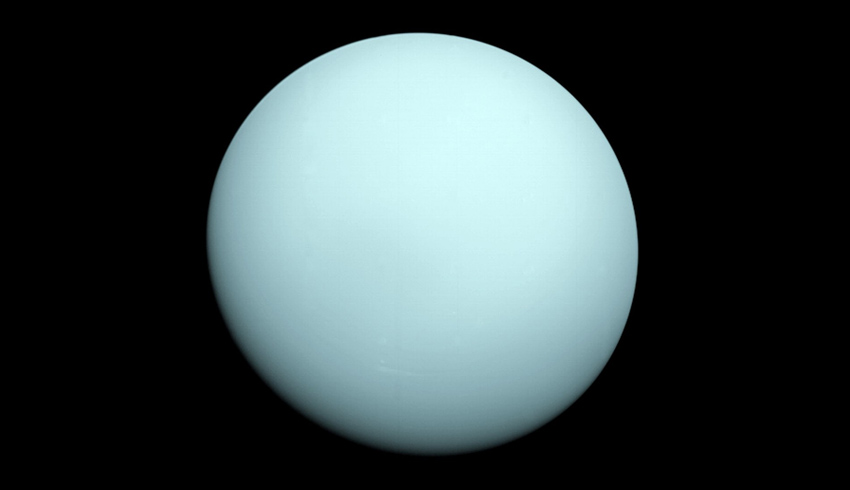Over the next few hours, Voyager 2 flew within 81,433 kilometres of Uranus' cloud tops, collecting data that revealed two new rings, 11 new moons and temperatures below minus 214 degrees. The dataset is still the only up-close measurements ever made of the planet.
Three decades later, scientists reinspecting that data found one more secret.
Unbeknownst to the entire space physics community, 34 years ago Voyager 2 flew through a plasmoid, a giant magnetic bubble that may have been whisking Uranus' atmosphere out to space. The finding, reported in Geophysical Research Letters, raises new questions about the planet's one-of-a-kind magnetic environment.
Planetary atmospheres all over the solar system are leaking into space. Hydrogen springs from Venus to join the solar wind, the continuous stream of particles escaping the sun. Jupiter and Saturn eject globs of their electrically-charged air. Even Earth's atmosphere leaks (don't worry, it will stick around for another billion years or so).
The effects are tiny on human timescales, but given long enough, atmospheric escape can fundamentally alter a planet's fate. For a case in point, look at Mars.
Dr Gina DiBraccio, space physicist at NASA's Goddard Space Flight Center and project scientist for the Mars Atmosphere and Volatile Evolution, or MAVEN, mission, explained, "Mars used to be a wet planet with a thick atmosphere. It evolved over time – 4 billion years of leakage to space – to become the dry planet we see today."
Atmospheric escape is driven by a planet's magnetic field, which can both help and hinder the process. Scientists believe magnetic fields can protect a planet, fending off the atmosphere-stripping blasts of the solar wind.
However, they can also create opportunities for escape, like the giant globs cut loose from Saturn and Jupiter when magnetic field lines become tangled. Either way, to understand how atmospheres change, scientists pay close attention to magnetism.
Unlike any other planet in our solar system, Uranus spins almost perfectly on its side – like a pig on a spit roast – completing a barrel roll once every 17 hours. Its magnetic field axis points 60 degrees away from that spin axis, so as the planet spins, its magnetosphere – the space carved out by its magnetic field – wobbles like a poorly thrown football. Scientists still don't know how to model it.
This oddity drew Dr DiBraccio and her co-author Dr Dan Gershman, a fellow Goddard space physicist, to the project. Both were part of a team working out plans for a new mission to the "ice giants" Uranus and Neptune, and they were looking for mysteries to solve.
Uranus' strange magnetic field, last measured more than 30 years ago, seemed like a good place to start.
They downloaded Voyager 2's magnetometer readings, which monitored the strength and direction of the magnetic fields near Uranus as the spacecraft flew by. With no idea what they would find, they zoomed in closer than previous studies, plotting a new datapoint every 1.92 seconds. Smooth lines gave way to jagged spikes and dips. And that's when they saw it: a tiny zigzag with a big story.
The twin Voyager spacecraft were built by and continue to be operated by NASA's Jet Propulsion Laboratory. JPL is a division of Caltech in Pasadena. The Voyager missions are a part of the NASA Heliophysics System Observatory, sponsored by the Heliophysics Division of the Science Mission Directorate in Washington.

